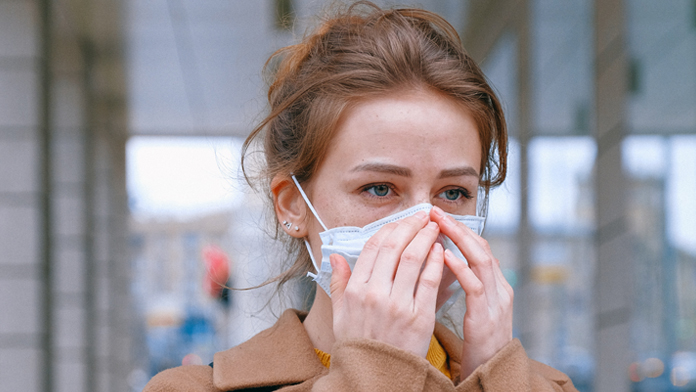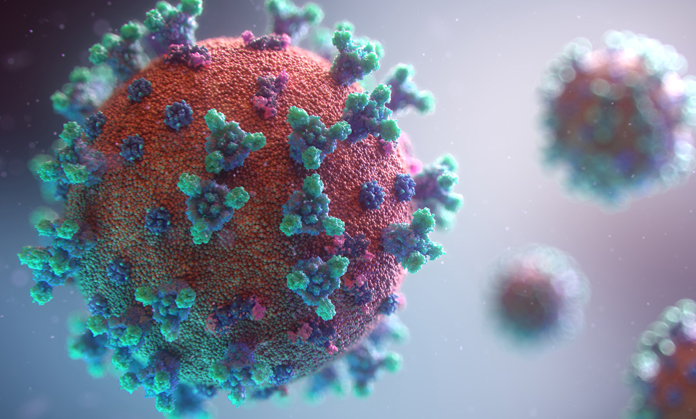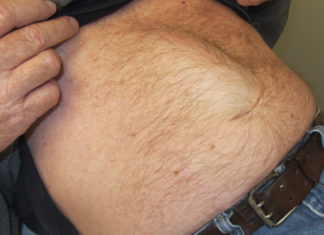From the very beginning of 2020, the World started to receive news about a new virus outbreak in the Wuhan province of China. This sudden outbreak took place in a seafood market in Wuhan in December 2019.
Since then, it has been spreading all over the World, and the unstoppable virus has infected more than 210 countries till now. The global panic is because it has taken the global death rate to over 191,000.
What is coronavirus disease or COVID-19?
COVID-19 stands for Corona Virus Disease 2019, is a highly contagious disease that causes respiratory tract infection. The infection is caused by SARS-CoV-2, affecting your upper respiratory tract, including nose, sinuses, throat, and the lower respiratory tract, including windpipe and lungs.
Types of coronaviruses

Almost hundreds of coronaviruses that can affect birds, animals, and human beings are present in nature. Among these, only 7 types of coronaviruses can infect people. Four types of these viruses cause mild cough and cold symptoms. They are 229E, NL63, OC43, and HKU1.
But the other three include serious risks to human health. They are:
- SARS-CoV (Severe Acute Respiratory Syndrome)
- MERS-CoV (Middle East Respiratory Syndrome)
- SARS-CoV-2 (COVID-19)
What are the symptoms?
Doctors and researchers are learning new findings on this new virus every day. According to the latest updates, this virus may not initially cause any symptoms, though the asymptomatic patients carry the virus from about 2 days to 2 weeks.
The most common symptoms include:
- Dry cough that increases over time
- Fever
- Fatigue
The more severe symptoms include:
- Breathing trouble due to shortness of breath
- Chest pain or pressure
- Confusion
- Excessive dizziness
- Unconsciousness
- Bluish face and lips
Complications related to COVID-19
Few patients are facing complications in the later stages of the infection. They are subjected to further complications such as pneumonia, acute respiratory distress syndrome (ARDS), irregular heart rate (arrhythmia), severe muscle pain (myalgia), cardiovascular shock, heart damage or heart attack, and death.
These complications may be caused by a condition called cytokine release syndrome, where the infection leads to a flood in your bloodstream with cytokines. Cytokines are inflammatory proteins that can kill tissues and damage organs.
Difference between normal Flu and COVID-19
Though doctors are still learning about this coronavirus, early pieces of evidence say that this coronavirus is causing more deaths than the normal seasonal flu. The common flu symptoms are runny nose, blocked nose, sore throat, cough, sneezing, headache, fever, fatigue, and body pain.
Unlike common flu, nobody has immunity to prevent coronavirus as it is a new disease. Though the symptoms vary from person to person, COVID-19 is considered worse than the flu.
What are the causes of this New Virus?
As zoonotic by nature, coronaviruses were first developed in animals and then passed to humans. For that, people need to come in close contact with an infected animal. When people get infected, the virus can start transmitting from person to person through respiratory droplets.
COVID-19 is not directly linked to any animal as per researches. It is believed that the virus may have passed from bats to other animals like snakes and pangolin. Then it was further transmitted to human beings, which may have occurred in Wuhan’s seafood and animal market.
What are the Risk Factors involved in it?
Although the symptoms are mild for many patients, children, and young adults, it holds a certain percentage of risk factors. You are at high risk of contracting the disease if you are exposed to the saliva of an infected person present in the area where COVID-19 is spreading.
With proper prevention, you can lower the risk of infection. People living with someone infected, doctors treating patients in COVID-19 hospitals, health care staff, law enforcement people, and public utility workers are at increased risk.
The risk factors leading to further complications are high in older people of age group more than 60 and people who have any other serious health issues.
These serious health issues include:
- Lung diseases like Asthma and COPD
- Heart diseases
- Cancer
- HIV
- Obesity
- Diabetes
- Kidney diseases
- Liver diseases
How coronavirus transmission takes place?
When the virus infected droplets enter the respiratory tract through breathing, the disease starts spreading. The virus can also enter your body if you touch a surface or object where the virus is on and then touching your nose, mouth, or eyes. As per a research study, the virus can stay for long hours on different surfaces.
How to prevent coronavirus?
The best way to prevent the spread of this disease is to stay away from infected people. That is why many countries opt for total lockdown, where people get to stay at home and avoid close contact with infected people. Social distancing and maintaining good hygiene are ways to prevent it.
Few prevention tips:
- Washing hands frequently with soap and water for a minimum of 20 seconds.
- Avoid touching your nose, eyes, mouth, and face if your hands are dirty.
- Maintain at least 6 feet distance between individuals
- Clean objects like mobile phones, wallets, and things with sanitizer after coming from outside.
- Clean the most touched places like doorknobs. Computers, utensils, etc. with disinfectants.
Coronavirus diagnosis
When you are experiencing any or all COVID-19 symptoms, it is advised to contact for medical help. Call your doctor or the local health department for a coronavirus diagnosis. It can be diagnosed by various tests of the saliva, blood, or tissue samples. A swab test can be conducted by taking the swab from your nose and throat. Your doctor will advise you to either stay at home in isolation or get admitted to the hospital for any severity.
How to stop spreading the Virus?

If you are infected with the disease, you can help stop spreading further. Practice social distancing by staying in isolation. Use a mask always when coming in the presence of others. Cloth masks are recommended for the general public, while special masks are available for healthcare workers. Use a separate bedroom and bathroom if possible.
If you think you might have contracted the virus, you can stay in quarantine, but you do not have any symptoms. Cover your mouth, nose, and take extra care while sneezing or coughing. Throw your used tissues in separate dustbin bags and dispose of them carefully.
Coronavirus treatment
There is no particular treatment protocol for COVID-19 as of now. As there are no vaccines available in the market, there is no cure for the infection. Medical assistance is required to manage the symptoms as the virus runs its course.
The therapies used to tackle the symptoms are:
- Antiviral medications
- Mechanical ventilation
- Blood plasma transfusion treatment
- Steroids to treat the lung swelling
The outlook for COVID-19
The news about coronavirus deaths in everyday newspaper headlines might scare you, but you should not panic, most importantly. Protect yourself by following proper handwashing and social distancing techniques. Stay at home and stay calm.
All the information given above is for educational and informational purposes. Do not take the article content as any medical advice for the disease. It is advised to contact your doctor or healthcare specialist if you are having any health problems immediately.
7 sources
- Coronavirus and COVID-19: What You Should Know
https://www.webmd.com/lung/coronavirus - What you need to know about coronavirus (COVID-19)
https://www.health.gov.au/news/health-alerts/novel-coronavirus-2019-ncov-health-alert/what-you-need-to-know-about-coronavirus-covid-19 - Coronavirus(Covid 19) Risk Factors
https://www.healthline.com/health/coronavirus-covid-19#risk-factors - Types of coronaviruses
https://www.healthline.com/health/coronavirus-types#types - SARS-CoV
https://www.cdc.gov/sars/index.html - MERS-CoV
https://www.cdc.gov/coronavirus/mers/about/symptoms.html - SARS-CoV-2
https://www.livescience.com/coronavirus-immune-interferon-response.html






